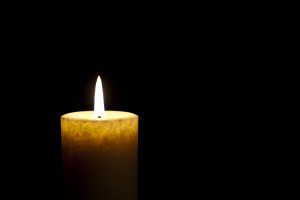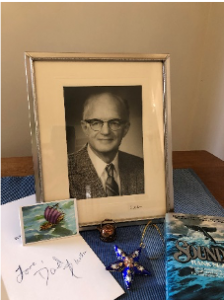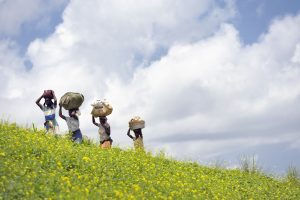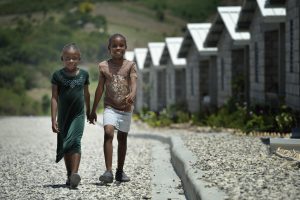When we must bear persistent pain
and suffer with no cure in sight,
come, Holy Presence, breathe your peace
with gifts of warmth and healing light.
These words by Ruth Duck are the opening stanza to “When We Must Bear Persistent Pain,” a hymn that will be included as one of two hundred hymns and songs in the forthcoming worship resource, All Creation Sings. As this resource was developed the themes of “lament” and “healing” were identified as topics needing additional assembly song. Such songs are needed in every time but now as we are in the midst of a worldwide pandemic, the need is ever more pressing.
Some of the hymns in All Creation Sings that have been written more recently take on new meaning as we sing alone in our homes or via digital means. Adam Tice profoundly expresses the depth of our suffering at this moment in “Sometimes Our Only Song Is Weeping.”
Sometimes our only song is weeping; our only sound is gasping breath.
Sometimes it seems that God is sleeping while our brief lives are bound in death.
Who hears the song our sorrows swallow and offers hope to calm our fears?
When all our words seem frail and hollow, God heeds the prayers within our tears.
We know as people of God that such suffering has been encountered and sung about in the Psalms and in the hymns of every generation. Consider the sixteenth-century hymn “In the Midst of Earthly Life” penned by Martin Luther and in a new translation by Susan Palo Cherwien.
In the midst of earthly life fear and death beset us;
who attends and hears our cry, who does not forget us?
You only, God, you only.
In you our forebears put their trust, hoped in you and were not crushed.
Holy and righteous God! Holy and mighty God!
Holy and all merciful Savior! Everlasting God!
Though death would torment us, let us not sink in the dust.
Lord, have mercy.
In every time and place God’s people plead for mercy yet trust in the promise that God will never forsake us. Sometimes we address God in lengthy poems; sometimes we use short refrains that reassure. “Don’t be afraid, my love is stronger, my love is stronger than your fear,” sings a refrain by John Bell, echoing the biblical assurance to not be afraid. In Richard Smallwood’s song “Total Praise,” such praise arises not when all is seemingly well but “in time of the storm … [God is the] source of my strength.”
You may be deeply lamenting the loss of singing together in these days while still clinging to the promises expressed in the songs you’ve treasured. When we do come back together, perhaps these new hymns and songs will join those you’ve always known in expressing the sorrow of these days but also the hope in Christ that sustains us.
May these words by Shirley Erena Murray inspire such hope:
Let my spirit always sing,
though my heart be wintering,
though the season of despair
give no sign that you are there,
God to whom my days belong,
let there always be a song.
“When We Must Bear Persistent Pain” by Ruth Duck © 2005 GIA Publications, Inc. “Sometimes Our Only Song Is Weeping” by Adam M. L. Tice © 2015 GIA Publications, Inc. “In the Midst of Earthly Life” © 2005 Susan Palo Cherwien, admin. Augsburg Fortress. “Let My Spirit Always Sing” by Shirley Erena Murray © 1996 Hope Publishing Company.

 “I arise early in the morning and I cry out to you, I hope for your word.
“I arise early in the morning and I cry out to you, I hope for your word.

 It is an odd time to be looking ahead. In our lives at church, work, and home, we are taking things one day at a time. Our worship has moved to the home and our gatherings with our fellow members of Christ’s body is often mediated through a screen. Our hope, of course, is that this physical separation from one another is temporary, that we will indeed be able to see one another in person and pray and sing together before too long.
It is an odd time to be looking ahead. In our lives at church, work, and home, we are taking things one day at a time. Our worship has moved to the home and our gatherings with our fellow members of Christ’s body is often mediated through a screen. Our hope, of course, is that this physical separation from one another is temporary, that we will indeed be able to see one another in person and pray and sing together before too long. There’s another piece to ritual care for grieving people in the current situation, though: helping them create home ritual that fills some part of the need for more immediate ritual. This would be especially helpful when there is not any church-based ritual right away, or when a service is held but mourners you’re caring for cannot attend due to distance, illness, possibly having been exposed, susceptibility to infection, or the limitation on how many can gather.
There’s another piece to ritual care for grieving people in the current situation, though: helping them create home ritual that fills some part of the need for more immediate ritual. This would be especially helpful when there is not any church-based ritual right away, or when a service is held but mourners you’re caring for cannot attend due to distance, illness, possibly having been exposed, susceptibility to infection, or the limitation on how many can gather.
 In Fall 2020, the newest resource in the Evangelical Lutheran Worship resource family will be made available. All Creation Sings, a liturgy and song supplement, will include liturgies, prayers, and approximately two hundred hymns and songs.
In Fall 2020, the newest resource in the Evangelical Lutheran Worship resource family will be made available. All Creation Sings, a liturgy and song supplement, will include liturgies, prayers, and approximately two hundred hymns and songs.
